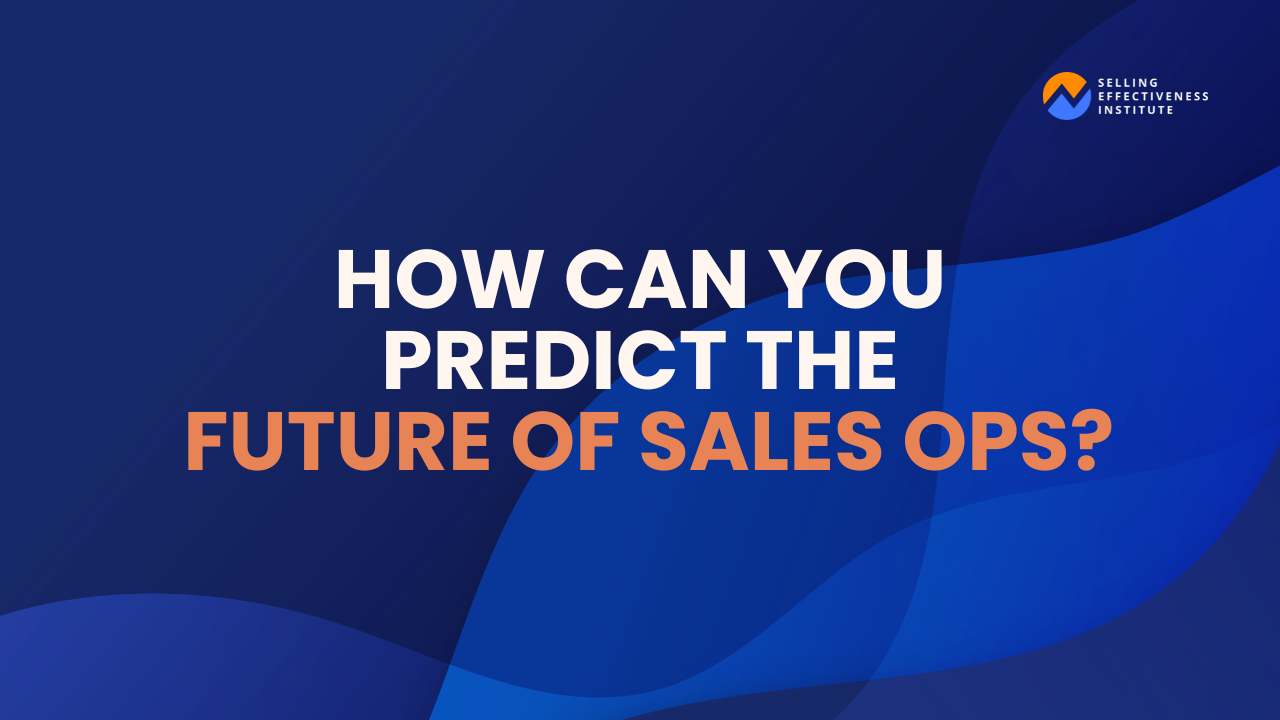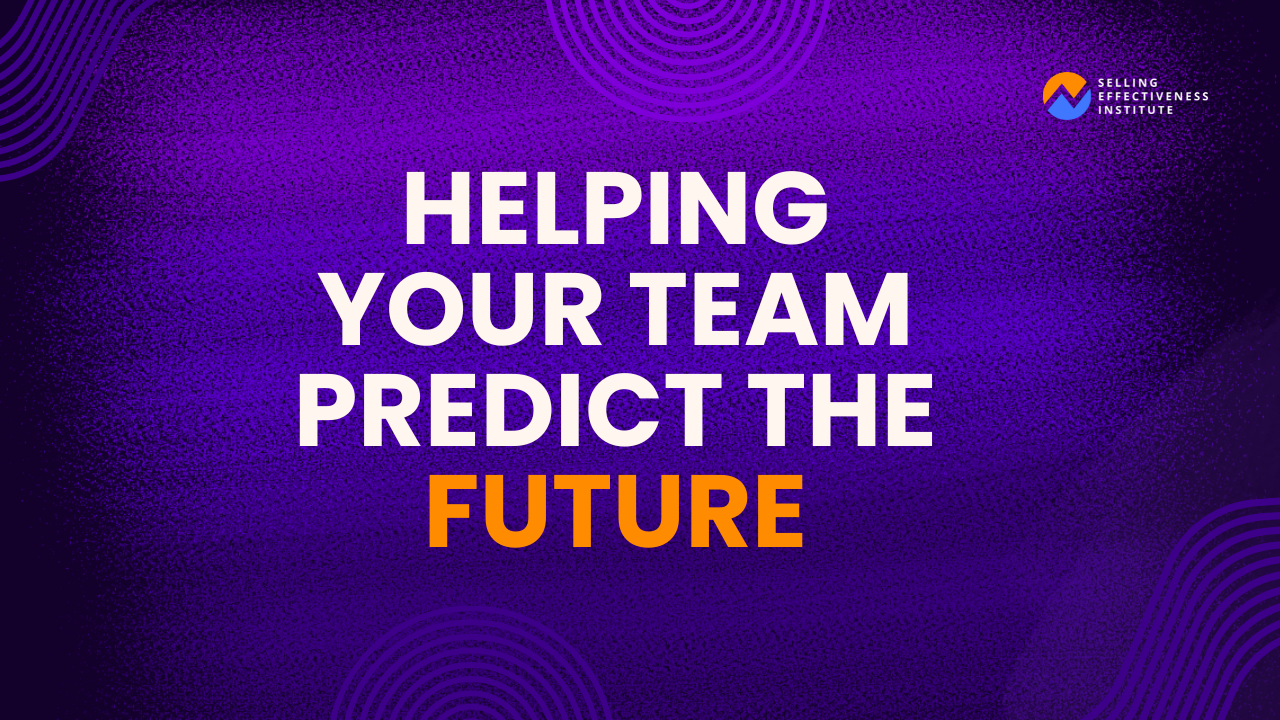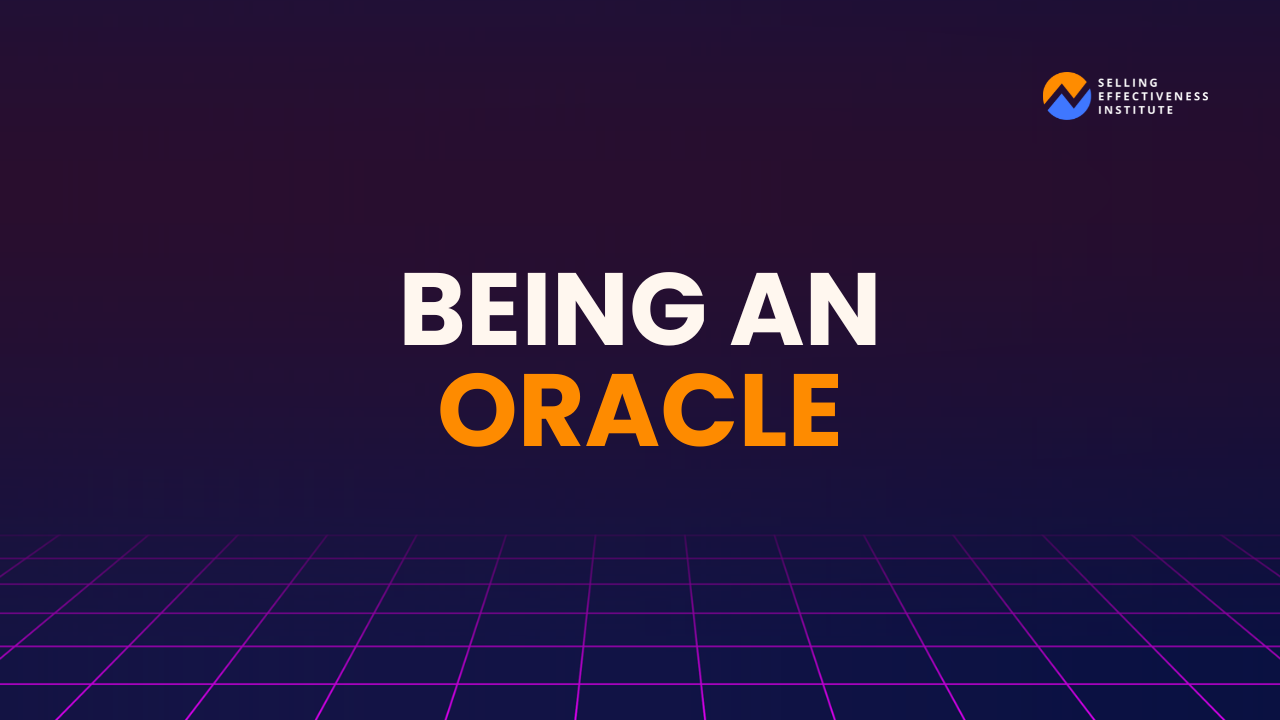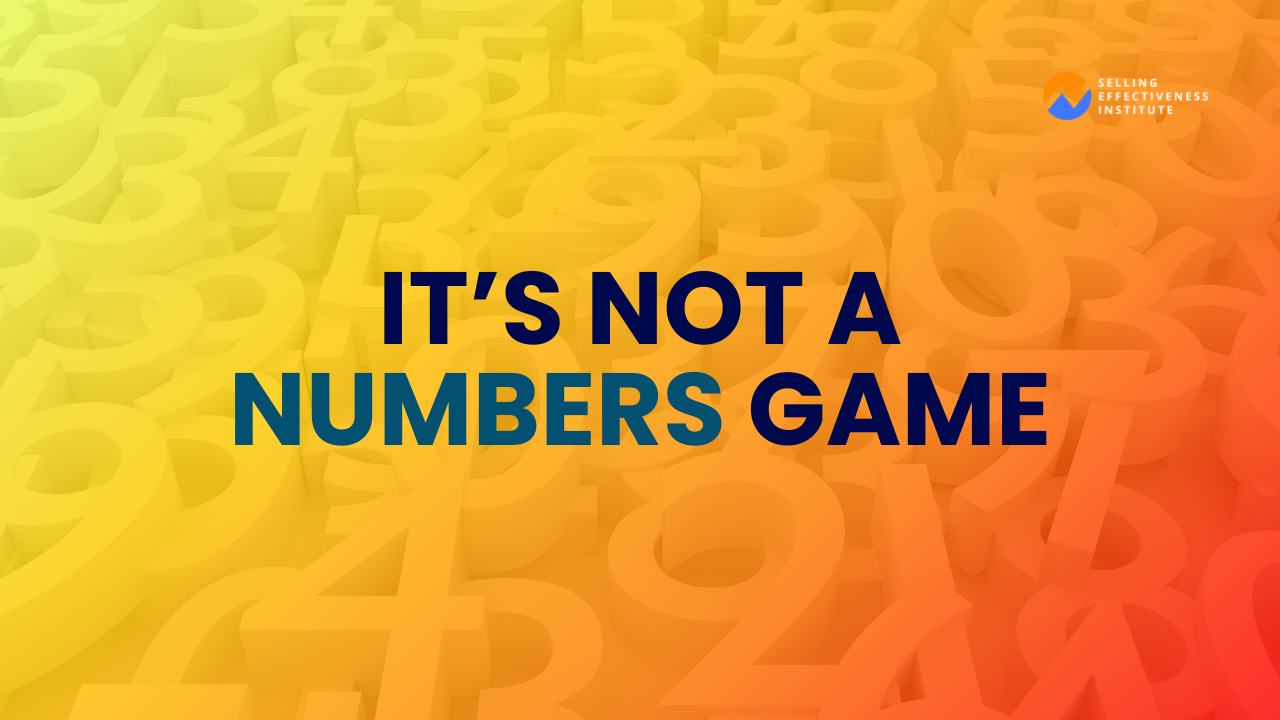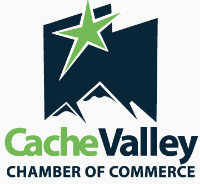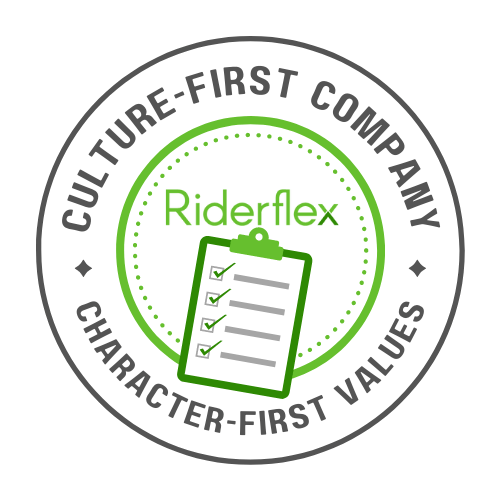Jason: Alright. Welcome back to the sales experience podcast. Welcome to part three of my conversation with Rakhi Voria. She is an amazing, powerful global digital sales leader. Please make sure to follow her online, interact with her if you feel that you know the stuff that she’s providing. It makes sense for you. She’s all about diversity and then also effective, honest, great sales experience as we touch on when talking about the sales experience. If you haven’t made sure to listen to parts one and two, here you go. Here’s part three of my conversation with Rakhi.
Rakhi: We would really want to help customers achieve their own business outcomes, but we want to do it in a way that is as seamless as possible for them to engage with us. And I think the more barriers that we can remove in terms of getting out the information to them as quickly as possible, tailoring the conversation to them as much as possible, showing them as many references, use cases that are actually relevant to the industry that they’re in. I think that’s really what it means to support a customer.
Jason: That’s great. And, uh, I think all of that is very valuable and it’s so fascinating. As I’m listening to you talk, there were so many vital things in there. So if you listen to that, make sure to replay that over and over again because I agree with everything you’ve said there. No need to recap any of that now for your role, let’s say IBM specific where you’re at now, what kind of initiatives or things have you kind of either put in place or helped mold or change in the digital sales role to kind of achieve that vision of that sales experience on your end?
Rakhi: Well, I joined IBM about a year ago, so I just came up on my one year anniversary and we’ve made a lot of changes over the past year. I mean, I think during my first six months I spent a lot of time learning and listening and doing my big world tour and having a chance to really sit with our sellers, our managers side by side with them, understanding what’s working, what’s not, which tools are best, which ones are falling short, where do they need help? And I encourage anyone who’s listening who is maybe moving to a new company or a new role to really invest in that time. I think for me, I struggled with that a little bit because on the one hand I wanted to be viewed as somebody who genuinely did want to learn and to understand how the business worked. On the other hand, I think especially coming externally, there is this pressure to make some changes pretty quickly and people are sort of wondering, okay, well what are you going to put your stamp on in this organization?
Rakhi: We’re expecting some level of change and transformation and I just encourage people to really be thoughtful in those changes. I mean, if things are working, just because you’re new doesn’t mean you have to change things. Maybe you change one thing instead of five. For me, I would say that there were several things that were working quite well actually. I think the team has made a lot of strides over the past few years. Several metrics were doing really well, but I did see an opportunity to just sort of streamline some of the activities that our sellers were doing. So I think as I had described, the team was really the first line of contact that IBM had with a customer. It was a mix of inbound, outbound, a lot of different plays, sellers across all different business units, all different geographies. And I think one of the challenges was, we had asked our teams to do too many things.
Rakhi: We are trying to be everything to everyone. And when you do that, it’s really hard to scale versus when you’re really focused on something in particular. So we had some of the most sharp sellers I’ve ever seen. I mean, they’re so well trained, they’re so fabulous, but we almost need to help, help them get certain roadblocks out of their way in order to be able to succeed. So there’s a few changes that we implemented just recently, so I’ll have to see if it all works so far. But one of the things is we actually split inbound and outbound. So when I first came into the role, we spent a lot of time doing some industry analysis, looking at how IBM digital development functions sort of compared to the industry across a variety of dimensions. So workload skills, organizational design, compensation models, etc.
Rakhi: And one of the things that really caught my eye was how many people in the industry have split inbound and outbound? There’s an article from 2019 by Topo that was the benchmark report. They said that 59% of the industry has already moved to this model. It seems to yield better results when you help sellers build confidence in skill. Inbound sellers can become more product savvy. Outbound sellers can truly learn how to prospect and work on white space and upsell and cross sell and everything. So we decided to deploy that model actually. Unfortunately we weren’t able to do it everywhere just because of critical mass and language and geo complexities. But that’s one of the things that we did. And then a couple of other changes that we made is we’ve actually made it so that the sellers have more of an opportunity to progress and close deals themselves.
Rakhi: Prior to this change, they were more of the lead generation team and creating a lot of opportunities, sometimes passing themselves, oftentimes passing to somebody else for closure, although they would stay kind of in lock step with those opportunity owners. But now we’ve really sort of expanded their ability to actually progress, reheat, nurture deals because again, they’re the first line of contact with the customer. And so ideally you would want to be with that customer throughout that cycle versus having too many handoffs and just making it as easy as possible for them to interact with as few people as possible to get them what they need. So yeah, we’re very excited about those changes and really looking forward to seeing how it all unfolds.
Jason: Well, and I think those are interesting changes and amazing and I appreciate the fact that even as a large organization and wanting to make those changes, because usually with bigger organizations, it’s a big ship that’s slow to turn. And I appreciate the fact that you’re getting in there and whoever’s supporting you is putting some of those initiatives in place. I totally agree with you about having that first point of contact being the one who kind of takes more and more of the relationship. Obviously if it’s like a just an inbound who’s then forwarding it onto more of the seller salesperson, that’s one thing, but I know from my experience for ever, typically the person that the customer, the prospect talks to first if they want to keep moving forward in the conversations, it’s because they trust that person. They like that person. They have a rapport with that initial contact.
Jason: And it’s actually sometimes really hard to replicate that down the chain even with handoffs because that person has stuck with them. I know a long time ago I was in a business with a partner of mine. If he got a phone call first and then I tried to take over that rest of that sale and transaction, they would either always ask for him and want to talk to him or it would just feel weird and it was vice versa. It was amazing how like that first person that they talked to was the person that kind of, I wouldn’t say bonded with but like trusted because they were willing to talk more.
Rakhi: Yeah, and I think that’s a very natural thing for a prospect to want to do.
Jason: Yeah, and then the other part that I appreciate, and obviously I got people who are listening to this of all size organizations, a lot of them are small and they can’t justify it, but I support that same method of the inbound versus the outbound sales teams. Partially because it’s two different personalities that are going to be successful at those. There are people who can do both, right? Like I’m sure you could do both. I can do both. I know a lot of sales professionals who could do both even within the same day and back to back conversations, but really the value in my experience tell me yours is that when you separate inbound and outbound, then it allows people to just focus on those conversations and that approach and those relationships which are completely different. And like you’re saying is being more focused instead of kind of broad but being more narrow with your sellers and salespeople. More of a sniper than a shotgun. Just trying to be everything to everybody but just like, okay, how do you do this one thing and do it really well and then as a machine, how do we feed you with as many of those opportunities as possible so you can just do what you do best in this moment?
Rakhi: I agree. I mean I think inbound and outbound are very, very different sales motions and require a different profile and that’s exactly why we made this change and in addition to really being able to focus sellers and help them really build that competence of skill that we talked about, I think it also then gives you the opportunity to really improve and optimize the actual activities that they’re doing. So I mean splitting inbound and outbound was the first step of what has been and will continue to be a journey for us as we kind of evolve the organization. But now what we’re really doing is looking at, okay, what are all of the things that an inbound rep did? What are all of the things that an outbound rep did? What are the things we could stop doing? What are the things that are working that we want to double down on? Where do they maybe need more support or messaging or scripts, or what is it within that actual process of the activities that they’re doing that might not be working or that has the opportunity to get better. And then actually investing in those channels too.
Jason: Right. And I think when you do that, which I’m sure you’ve found that there’s some stuff that you’re just cutting out that are unnecessary, but then, like you said, doubling down on the things that do work and how do you do more of it than how do you support that with systems, with processes, with technology so that they can do it. It’s so interesting how many times I’ve seen an organization in the past where they have somebody trying to do both. They’re doing outbound, they’re doing cold calls, they’re power dialing there, doing mass email. They’re doing whatever on the outbound business development, SDR, BDR, even if it’s for themselves as a sales executive, they’re in this hunting kind of attack mode and then you serve up an inbound lead where somebody started this conversation maybe online and then they’re the ones reaching out. You want to serve them and meet them where they are and you have this Hunter killer who’s just still in this hunting mode, get on the phone or interact with somebody who’s just like ready to get help and just wants to be kind of nurtured and, and understood and ask questions but just literally destroy that conversation cause they’re moving at a completely different pace then what was necessary for that inbound.
Rakhi: Yup. For sure.
Jason: Yeah. I’ve seen a lot of money being spent on leads that are wasted by not having them split. And again, if you’re listening to this, the sooner you can or the better you can split those into different groups, the outbound, the inbound and then you might even find, you know, within those subcategories, right. The outbound for the opening and the outbound for like the actual moving the conversations. And those are two different groups of people sometimes. So in terms of digital, again, your life has been spent digital as far as your careers at Microsoft and IBM. Mine has not. So I’m just fascinated with you in the digital sales realm, what does it take or what kind of salespeople are successful in that? There’s obviously the common things in sales, and you even mentioned it earlier when we were talking about women in sales and success in sales in general, but what does it take for someone to be successful in digital sales? Like what kind of attributes do you see for that or activities?
Rakhi: You know, honestly, I think it is really the same as what you would expect for face to face. I mean, you obviously need to be a good listener. You need to be somebody who is asking a lot of questions. You need to be professional regardless of if you’re home on your video or in person, you need to be an effective communicator. Just because you’re not sitting physically in front of a customer doesn’t mean you’re only talking to them via email. I mean you’re often probably talking to them on the phone, on video, etc. So I think all of those things that make a face to face seller successful are absolutely critical for digital sales as well. That being said, I think there are things that really set digital sellers apart. For example, um, really being well versed in the art of social selling. So really being able to leverage things like LinkedIn sales navigator and being trained in social selling.
Rakhi: I know a lot of companies now invest in that to make sure that every single rep really knows how to prospect with people well, whether it’s on LinkedIn or via email or not. Some of those blanket things that you had mentioned that you get a lot of earlier. And I do myself and I mean I think nowadays like sellers are getting so, so creative in the way that they do that and they’re using Twitter and Instagram and all of these things and the lines are really blurring between your professional life as a seller and your personal life as a human being. And I think that’s a good thing. I mean, I actually have a seller of mine in Canada and she is really obsessed with the show, the bachelor, and she has this Twitter account, thousands and thousands of followers. Where, she tweets about the bachelor on Monday nights when it plays.
Rakhi: And she’s actually engaged several customers through that. Customers who like the bachelor and she makes a lot of jokes about comparisons between the show as well as IBM solutions. And she makes jokes about it and she’s like, well, you know, you need to get IBM security or systems or whatever. And I don’t know how she came up with this creativity, but I love it. And I just think obviously you want to coach your sellers to be representatives of your company. To be professional in every endeavor, your brand. But I think we are sometimes almost too afraid of just showing our whole self. And that’s really what customers want to see nowadays. They want to see that you’re a real person and that you get it. So I think all of those things are really important. But then when it comes to actually recruiting, I would also love to offer a few tips on that because I think unfortunately so many sales teams really recruit from a lot of traditional sources.
Rakhi: And I have found that some of my best hires are from really non traditional places like the military as an example, I found people who have come from the military to be very relentless, focused. They have a sense of comradery, teaming and just sportsmanship. And I think all of those things are actually really great for sales. Retail could be a great place, even if you’re an enterprise tech company. I’ve actually had situations where I’ve recruited people from like a local Starbucks as an example just because they’re that good. So I think you have to really widen the talent pool, keep an eye out any and everywhere, especially if you want to recruit diverse people who might not naturally consider roles in sales and just really create an environment that fosters inclusiveness so that they want to join your organization. And that takes a lot of effort, unfortunately, but it’s well worth it.
Rakhi: So I think things like even really going through your job descriptions and red lining them and making sure that you’re using the right verbiage to attract the right candidate. A lot of people post a lot of things around requiring certain sales experience or some people, literally to this day, even say we’d love for people with competitive sports backgrounds as an example. And right off the bat, that probably might actually really make some women not be interested in a sales organization or if they see the word Hunter on the job description. It’s just a very aggressive word. So I think it’s really important to be super intentional, as simple as the job descriptions.
Jason: Alright. That’s it for part three. Thanks again for listening to this. Make sure to come back tomorrow for the final part of the conversation. As always, keep in mind that everything in life is sales. People remember the experience you gave them.

